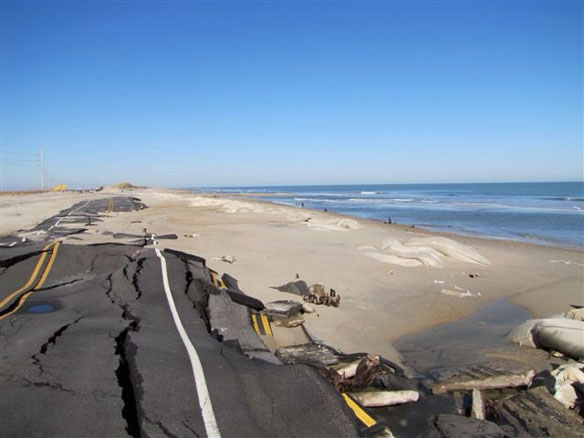
Photo source: ©© NCDOT communications
Excerpts;
In the wake of Hurricane Sandy, the New York subways were flooded and unusable, and much of the city lost power for several days. But despite such powerful scenes of destruction, most people don’t think these disasters will happen to them, so they aren’t prepared for them, or for recovering from them.
That lack of preparation, combined with the steady uptick in coastal populations, exacerbates the devastation caused by natural disasters. As the population grows, becomes more urbanized and builds infrastructure in hazardous areas like the coast, natural hazards pose an increasing threat. A panel of experts, speaking June 25 at a science policy conference of the American Geophysical Union (AGU), called for greater resilience in facing such hazards.
Resilience means not only preparedness for a threat, but also the ability to absorb, recover from or adapt to one, said Gene Whitney, a member of the Committee on Increasing National Resilience to Hazards and Disasters at the National Academy of Sciences/National Research Council. The committee recently published a report on disaster resilience…
Read Full Article, LiveScience
learning To Bounce Back: Forget About Sustainability, It’s About Resilience, The New York Times
Understanding Human Nature When Mother Nature Wreaks Havoc, NSF
We Need to Retreat From the Beach
As ocean waters warm, the Northeast is likely to face more Sandy-like storms. And as sea levels continue to rise, the surges of these future storms will be higher and even more deadly. We can’t stop these powerful storms. But we can reduce the deaths and damage they cause… An Op Ed by Orrin H. Pilkey.








